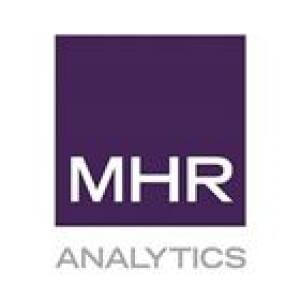19 January 2021
A wasted opportunity? Don't leave BI tools on the shelf

Maximise your return on investment...
A recent poll from MHR Analytics suggests powerful software is going ignored or under-utilised within organisations. Despite having access to Business Intelligence (BI) through enterprise licencing packages, many users across the public and private sector are failing to put it to work.
When BI stays on the shelf, it means missing out on a valuable stream of business insights. Yesterday, it was 'Shelfware'. But with some targeted help, that bundled BI app might easily become the most useful part of your software stack.
Paid for but not used: why Shelfware exists
No CTO would intentionally purchase software for it not to be put to use. And yet the estimated cost of unused software in the UK stands at £5.7 billion. To give some perspective, this amounts to £159 per work user desktop.
Some of this wastage will be down to housekeeping issues with IT inventory management. In other words, applications are installed; they do not quite meet expectations or are superseded by other tools, but there’s a lag in removing them from the organisation’s software estate.
In many other instances however, the presence of 'Shelfware' is a consequence of software licencing arrangements. The ubiquitous Microsoft 365 platform is a prime example.
Especially for larger public sector bodies and corporates, the Enterprise package is the go-to 365 licence option. A lot of apps are bundled into the package, over and above the standard Office features. Some apps will be used throughout the organisation; others, not so much.
Power BI has no place on the shelf
With bundled subscriptions, licences are typically arranged in pretty rigid tiers, without the possibility to cherry-pick what each user gets. But let’s assume you’ve done your homework and chosen a tier that covers your requirements. Even though the licence contains elements that users are not going to put to work, where’s the actual loss to your business?
It all depends on what elements of the licence are left on the shelf. With Microsoft 365, one of the standout features included in the higher Enterprise tiers is Power BI. Far from being a peripheral add-on, this is actually one of the most powerful business intelligence tools out there.
Power BI can pull together data from across your organisation, allowing you to collate, manage and organise it. Through easy-to-create charts and visualisations, it becomes possible for ordinary business users to join the dots between different systems and uncover fresh insights. For tracking KPIs, ad hoc or scheduled automated reporting, ‘what if’ forecasting and more, the added value it can offer is enormous.
Given its capabilities, one might assume that if you have Power BI at your fingertips, you would be inclined to use it. But MHR Analytics research suggests that this isn’t always the case. In our poll of CTOs and IT directors, 96% admitted they had unused BI software licenses in their organisation. 39% of respondents felt their organisations were failing to maximise the value of business intelligence software they had purchased.
The cost of missed opportunities
In lots of instances, the decision to acquire enterprise licences is driven by considerations such as the need for enhanced data security, document discovery and comms support. Power BI came along in the bundle - but it wasn’t really on your radar when you made the purchase.
But rather than relegating it to the shelf, consider the organisational benefits it could offer. For example, data analytics has been shown to make decision making five times faster for businesses. The ability to cut out manual report production, save time and reduce errors yields an average ROI of 188%. 64% of businesses say that self-service BI delivers their organisation competitive advantage.
Failure to tap into these benefits - the absence of big picture insights and time wasted on manual reporting - represents a significant opportunity cost.
Under-utilisation
Ease of use is one of the big plus points of Power BI. In short, if you have ever used Excel, you can quickly get to grips with this tool.
Despite this, under-utilisation is common: i.e. despite having licence permissions at their fingertips, not all the business users who could benefit from it are putting Power BI to work.
Take the example of a Project Management Office (PMO). The licences for this team gives them full access to the Microsoft Power suite; primarily so they can work with the PowerApps and PowerAutomate workflow management tools.
Power BI access also comes with the package. Putting it to work could make it much easier for the PMO to manage governance issues. They could carry out ad hoc performance analysis across the entire project portfolio. It could stop them getting bogged down in routine management and think more strategically.
Yet despite all this, there can be pushback. Especially outside of the departments most closely associated with data analytics (finance, for instance), there can sometimes be the attitude that BI is “not for the likes of us”.
Technical pushback
Power BI is on your desktop. Perhaps you’ve played around with it, utilising one or two readily accessible datasets. Despite this, you’ve never really put it to work.
This is an all too common occurrence. Many CTOs are well aware that large-scale utilisation of BI would be good news for the business. But the barriers to getting there - configuration, data discovery and preparation, proper training and more - mean that it’s subject to ongoing pushback.
If this sounds familiar, you need a way to make the leap from ‘Shelfware’ to day-to-day usage.
The Solution: Introducing Power BI Fast Start
A new service from MHR Analytics delivers precisely the support you need to prevent Microsoft’s business intelligence solution from languishing on the shelf.
With Power BI Fast Start, we can help you assess how and where Power BI can add most value to your organisation, including an understanding of the true cost of implementation, over and above licence costs.
The service includes help with installation and configuration, connection of on-premise data sources to the cloud (including connections to iTrent). It also includes training for power users in key areas such as dashboards, reporting and the set-up of automation routines.
To quickly start realising maximum value from Power BI right across your organisation, speak to MHR Analytics about Power BI Fast Start today.



